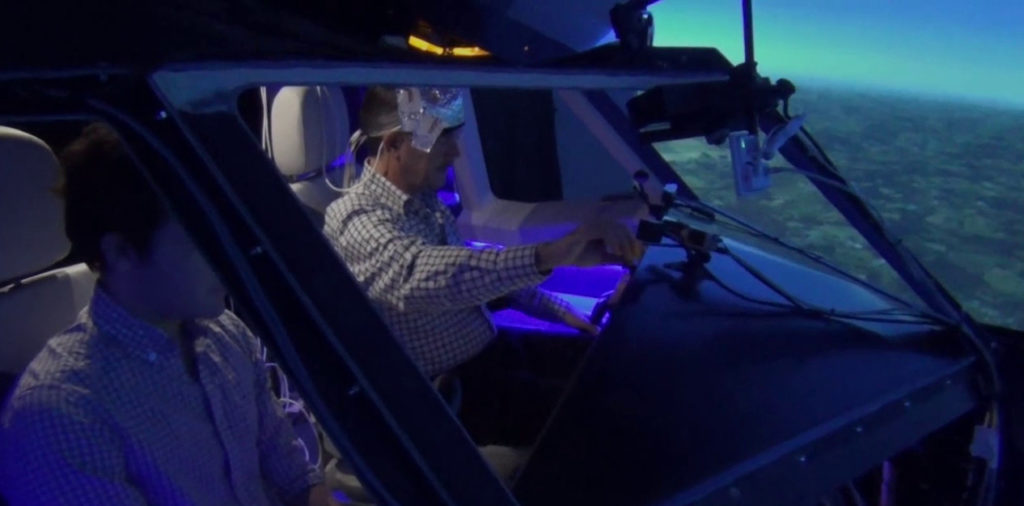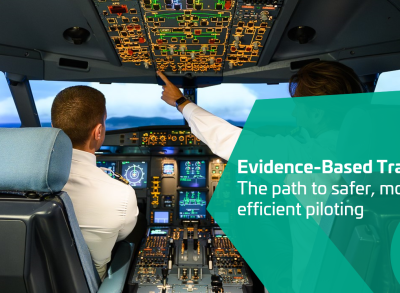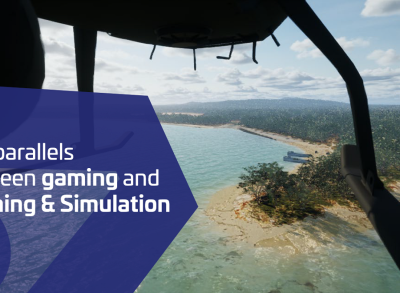The neuroscience of pilot training
Everyone knows the importance of human factors in instruction and training, yet until recently, they weren’t measured in any objective or quantifiable way. Today, new sensor technologies are changing all that. To find out more, we spoke to Christian Jutteau, technical manager at Thales’s training and simulation business.

There has always been a human relationship between instructor and trainees, so there has always been an element of subjectivity involved. The way training is delivered changes from person to person. The way a training exercise is monitored — even the way a trainee is assessed — has depended to a large extent on individual appreciations. Until now it has been hard to formally quantifying these human factors, so instruction and training has tended to be restricted to learning technical tasks and repeating procedures.
We came to really recognise the importance of human factors with the development of collective training, where relationships and interactions between crew members are crucial. At the same time, advances in physiological sensor technology have enabled us to measure and analyse a whole host of human parameters.
Does Thales have the expertise needed to analyse this kind of data, or do you work with outside partners?
Whenever you study human subjects you need a multidisciplinary team, with engineers for the technology side, but also mathematicians for the data analysis and medical experts to help us interpret the data and assess its significance. Correlating heart rate with stress levels may be relatively simple. But interpreting blinking, pupillary response and electrical signals in the brain is more difficult. Here, we’re entering the realm of neuroscience research.
This is where our partners play a crucial role. Our main partner in this field is the COGNAC-G laboratory, which we first worked with for the development of the rugby scrum simulator for the French Rugby Federation. COGNAC-G brings together researchers from France’s national research institute CNRS for the medical side, the ENS Cachan engineering school the complex mathematics and the IRBA armed forces biomedical research institute for analysis of human factors. Thales Research & Technology (TRT) in Canada and the Netherlands also bring us their specialised expertise in human factors.
How do you conduct these studies?
First, we define the signals we want to study and the sensors we need. Then we develop test scenarios where pilots are immersed in real-life conditions and have to deal with incidents, some of them severe, during a training session. We select several pilots to conduct the assigned mission, and their actions and reactions are recorded and analysed in detail. It is important to use pilots from various backgrounds so that our measurements cover the entire spectrum of operations, from emergency medical services to air-sea rescue, from police helicopters to military transport planes. We also use pilots of different ages and levels of experience. So we can really define the basic characteristics of any pilot — if we only used test pilots, the results wouldn’t be representative.
What have you achieved so far?
Our approach has been validated on the European ACROSS project, which involved tests on an A320 simulator. We have made sufficient progress in terms of sensor integration, measurement system architecture and the ability to capture and process real-time data on actual pilots for the solution to be considered viable by European experts, aircraft manufacturers and Thales itself.
Now we're moving ahead through the IKKY project with Airbus Helicopters, and on CleanSky2 with Thales’s avionics business, in order to bring the technologies to maturity and develop an industrial solution that can be integrated with any training simulator and, in the longer term, with an actual aircraft cockpit.
Where is all this leading?
Because of the inherent variability between pilots, we need to conduct a lot more tests to refine our models and make them more robust. Sensor technology is constantly evolving, so we will also need a measurement platform that is less intrusive and more acceptable to the pilots. Lastly, we want to look at applications beyond aviation, in areas like land vehicles and control centres, for example. But human beings are incredibly complex subjects! A lot remains to be done, particularly in terms of behaviour modelling and prediction. That said, it's now clear that human factors expertise and solutions like these will become a key discriminator for Thales in the years to come.
Stay connected with us...
Find us on Twitter @ThalesAerospace, on our official Youtube channel Thales Aerospace and on LinkedIn Thales Aerospace.




